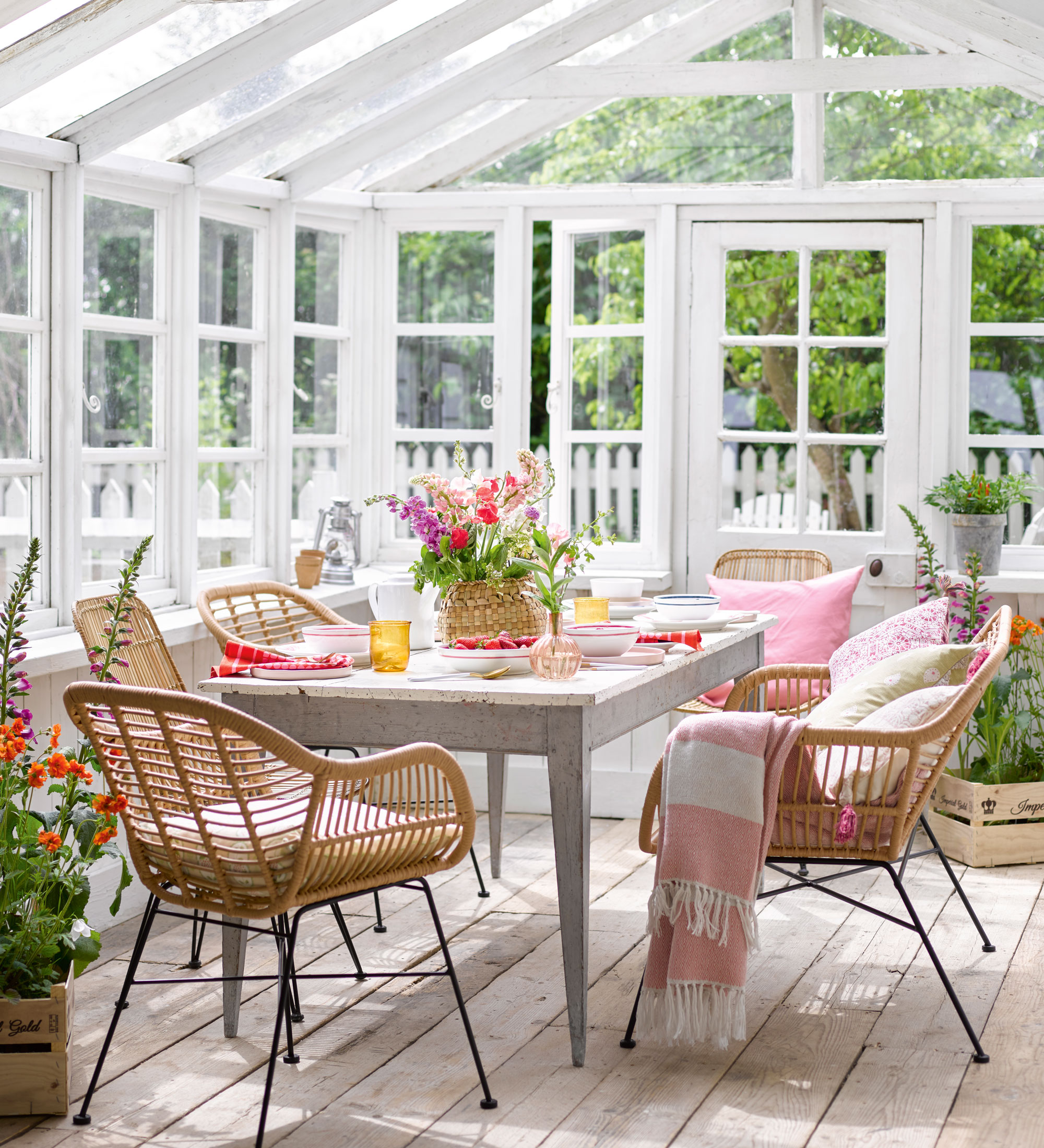
As the temperatures continue to rise over the summer months, our homes can get particularly warm and humid. But one room where that problem is truly exacerbated is in a conservatory, orangery or garden room.
A conservatory is often a perfect place to watch the world go by, and for many households, they often double as a dining room. However, when temperatures soar into the 20s and 30s they quickly turn from a pleasantly warm spot to an unbearably hot greenhouse. All those glass panes are usually the culprit for the magnified heat, however, there are ways to keep a conservatory cool in warm weather with the help of some expert tips.
How to keep a conservatory cool
‘Glass extensions and conservatories make beautiful additions to our homes. They create extra space and flood our rooms with natural light. But come summer, these spaces are at risk of overheating,’ says Yvonne Keal, Senior Product Manager at Hillarys.
Whether you choose to utilise one specific tip or a combination of several of them, here is how to keep a conservatory cool in summer.
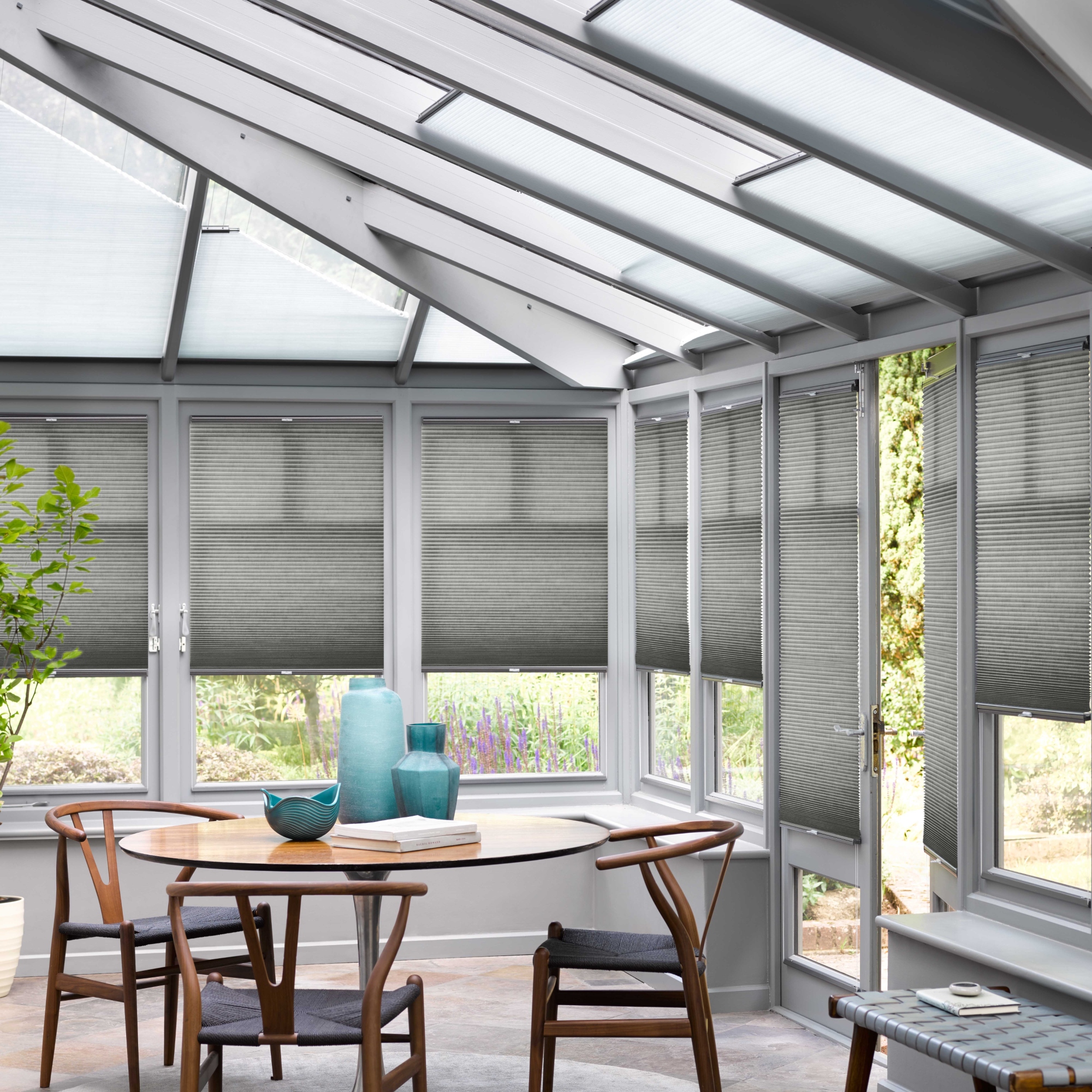
1. Install blinds
You may have considered installing blinds in your conservatory but it is particularly important to choose the right kind to keep the space cool.
There are a few different options available to you. Venetian blinds keep out the sun while allowing a cool breeze to flow through your conservatory, while blackout blinds ‘offer the potential to considerably cool a home down,’ says Oliver Hudson, Director at Blindsbypost.
‘76% of all daylight entering through a window pane transfers into heat. Blackout blinds block and reflect the sunlight away from a room, rather than absorbing it.’
Then you have pleated blinds. They are, ‘made from a specialist fabric that actually reflect the sun’s rays right back out of the window. This keeps the room cool so you can enjoy your space for longer,’ Yvonne remarks.
Another option is a thermally backed blind. Now, you may assume that thermal blinds are only helpful during the cold winter months to help insulate a room but the thermal layer can actually ‘reflect the heat entering windows,’ according to Oliver.
2. Keep your blinds closed during the hottest part of the day
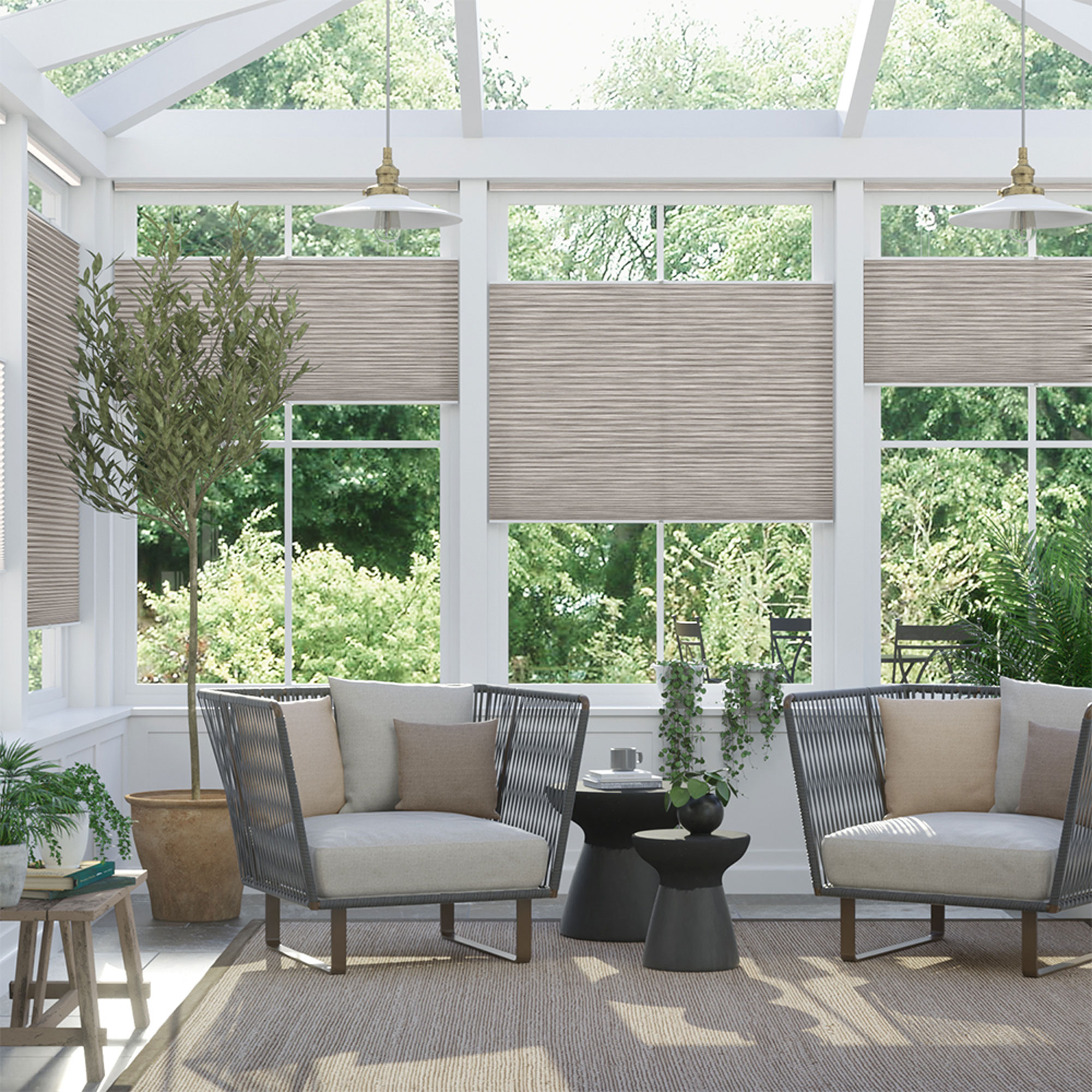
It may seem counterproductive to close your blinds on a lovely sunny day but ‘keeping your blinds and curtains closed during the day will act as a barricade to the unwanted heat entering your home,’ reveals The Residence Collection’s Marketing Manager, Jo Trotman.
‘The trick is to put the blinds down in the morning and keep them closed, only raising them for short periods when you wish to sit in the conservatory. Once they are raised, the sunlight can enter the conservatory, warming the air inside. This can be hard to cool back down again, so try to limit raising the blinds when the sun is shining,’ advises Rob Smith, General manager of ConservatoryLand.
If you are set on keeping your blinds open to let in the natural light, ‘opt to close your blinds and curtains between 11am and 3pm, when it’s the hottest part of the day,’ Jo continues. ‘When the temperature dips during the evening, open them to enjoy the last of the sunlight.’
3. Apply a cooling film to your conservatory windows, door and roof
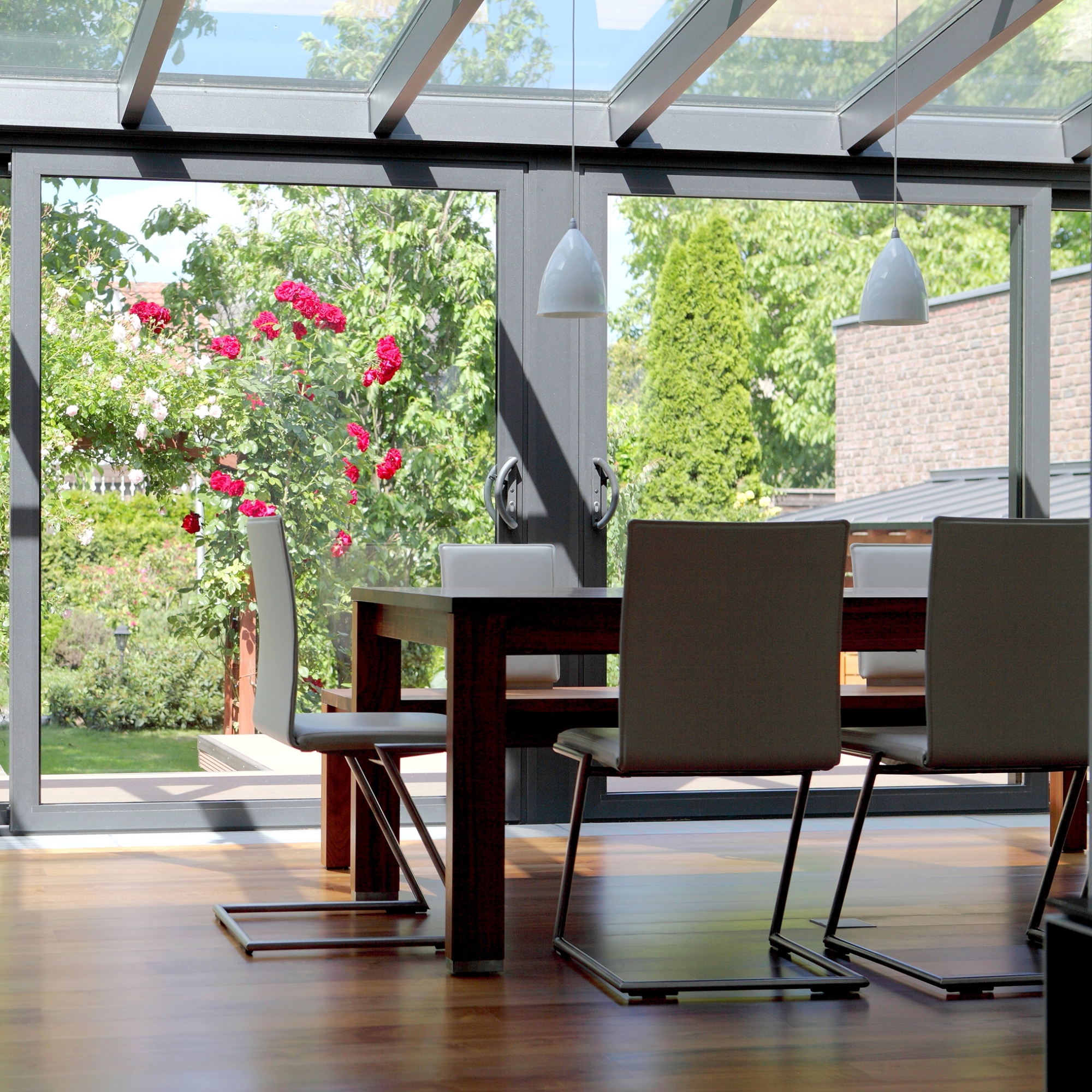
If you’re looking for an alternative to blinds, have you considered a cooling film that can be applied to the glass? This film (available from bands such as purlfost), can be fitted simply by applying it to your conservatory windows, door or glass roof, is also rather inexpensive compared to some of the other cooling options.
‘Some film you can purchase will reject a large majority of the sun's rays, including potentially harmful UV rays. The film is designed to reflect and reduce the rays entering the conservatory and therefore reduce how hot the conservatory can get,’ reveals Dave Sadler, owner of JBFurniture.co.uk.
The films can also reduce glare and if you pick a tinted variety, will allow you to see out but add a layer of privacy, as no one will be able to see in.
4. Add air conditioning or fans

Now, this might not be the most low-cost option but adding air conditioning can be ‘an effective way to ensure airflow in a sun-soaked space to keep it cool,’ affirms Rob.
‘A low wall-mounted air conditioning unit is a great choice for conservatories with a full-height wall or dwarf wall. Plus, in the winter, the unit can provide warm air that will help heat your room,’ he adds. Alternatively, the best portable air conditioners are a good retro-fit option.
Adding a ceiling fan can also help circulate cooler air around your garden room or orangery. You’ll just want to ensure that the ceiling is high enough to install one. If it isn’t, you can opt for one of the best fans on a stand or a tower fan instead. These will also be considerably more affordable than installing an AC unit.
If your conservatory doesn’t have many or any plug sockets, you may want to add a wireless fan.
Chloe King, Brand Manager at Duux also suggests utilising your fan in more ways than one. ‘Putting a bowl of ice or a frozen water bottle in front of a fan can create a cooling breeze,’ she offers. ‘But this will only work if you position yourself in the airflow. When the outside temperature is cooler than that inside, try putting the fan in front of an open window to blow cool air from outside into the room.’
5. Consider getting a roof vent to ventilate the space
If you find that keeping your conservatory cool all year round is an issue or is preventing you from enjoying your garden room in the sunny weather, you may want to consider adding roof vents.
These vents are electronically operated, so you don’t need to worry about manually opening and closing them and can be used in tandem with side opening windows. ‘This creates a chimney effect - where cool air comes in down low and then the heat rises and escapes through the roof vent - which is better for air circulation,’ reveals Mervyn Montgomery, founder, and joint director, Hampton Conservatories.
‘Basically to ventilate properly on a hot day you need the cool air coming in low and hot air escaping at the highest point,’ details Ryan Schofield, Managing Director, Thames Valley Window Company.
7. Use light and natural materials to decorate it
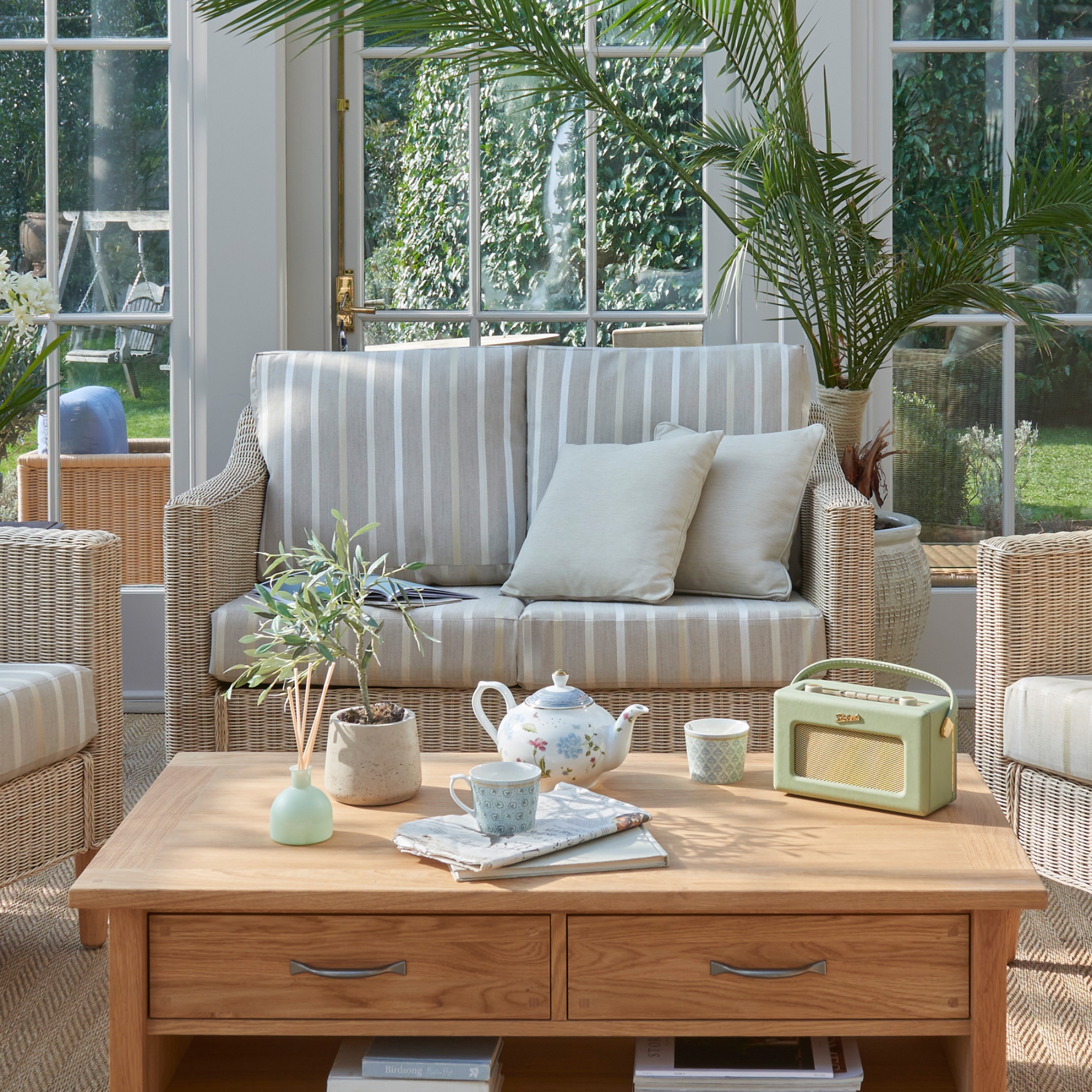
‘Your choice in décor is also key,’ according to Rachael Munby, Group Marketing Director at Anglian Home Improvements. ‘Certain fabrics and décor should be avoided in a warm conservatory, such as black fabrics, which will attract the sun and fade over time if they are in direct sunlight day in and day out.’
‘Instead, choose light, neutral hues, bamboo fittings and cotton textures to assist in creating a cooler ambience,’ she adds. ‘Rattan furniture is light and airy allowing air to pass through,’ as well, relays Dave.
You’ll also want to ‘avoid leather furniture as this can get very hot and uncomfortable to sit on under sunlight, as it retains the heat,’ says Rob.
8. Add plants to help with humidity
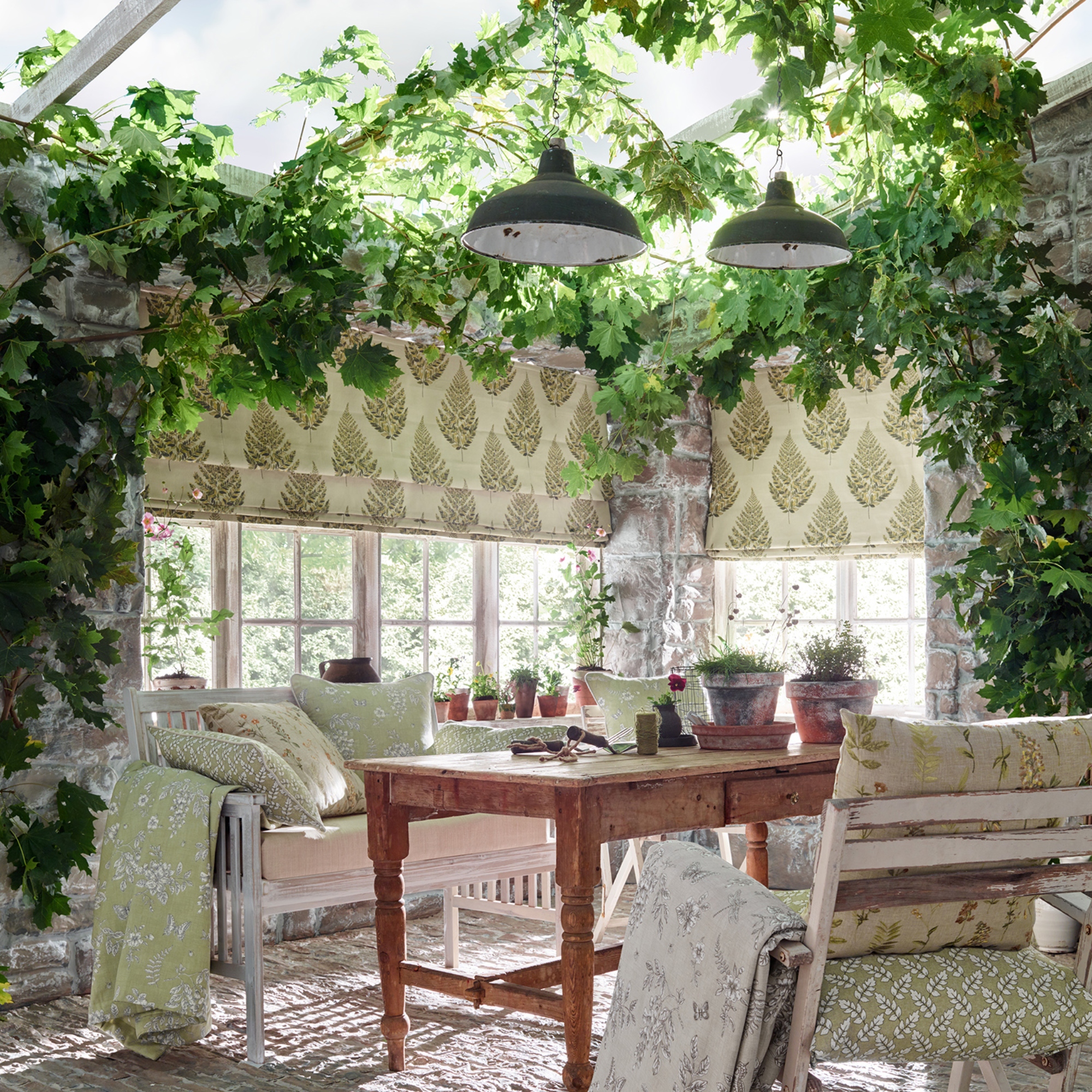
‘Did you know that choosing the right plants can also keep your home cool?’ asks Jo. Well, certain indoor plants can actually improve the humidity in the air through transpiration.
‘The plant's transpiration increases the water vapour in its surroundings, ultimately cooling itself and your home too,’ Jo continues. ‘If you’re on the hunt for an environmentally friendly cooling method, opt to add peace lilies and rubber fig plants.’
Why you shouldn’t open all the windows and doors
Now, while you may be tempted to throw open your conservatory windows or exterior door, this can actually make the room even warmer. Much like with curtains and blinds, it’s best to only keep them open during the mornings and late evenings, when it is considerably cooler and then keeping them closed during the hottest times of the day.
What to consider before you have a garden room or conservatory built
If you are still in the planning stages of adding a conservatory, orangery or garden room onto your home, there are a few things you might want to bear in mind so that you can comfortably use it all year round.
‘One of the most distinguishing features of a conservatory is the roof, composed entirely of glazed panels. However, in some locations and situations, an entirely glazed roof is not suitable or preferable,’ suggests Mervyn, This is when opting for a solid roof design may be a better option.
‘This allows for additional shading during the summer months and a cosier feel during the winter. However, it's still important to incorporate the correct ratio of glazing to create the desired bright and airy space below - this can be achieved by careful consideration of the aspect, use of glass in the walls, clerestory, and glazed gables.’
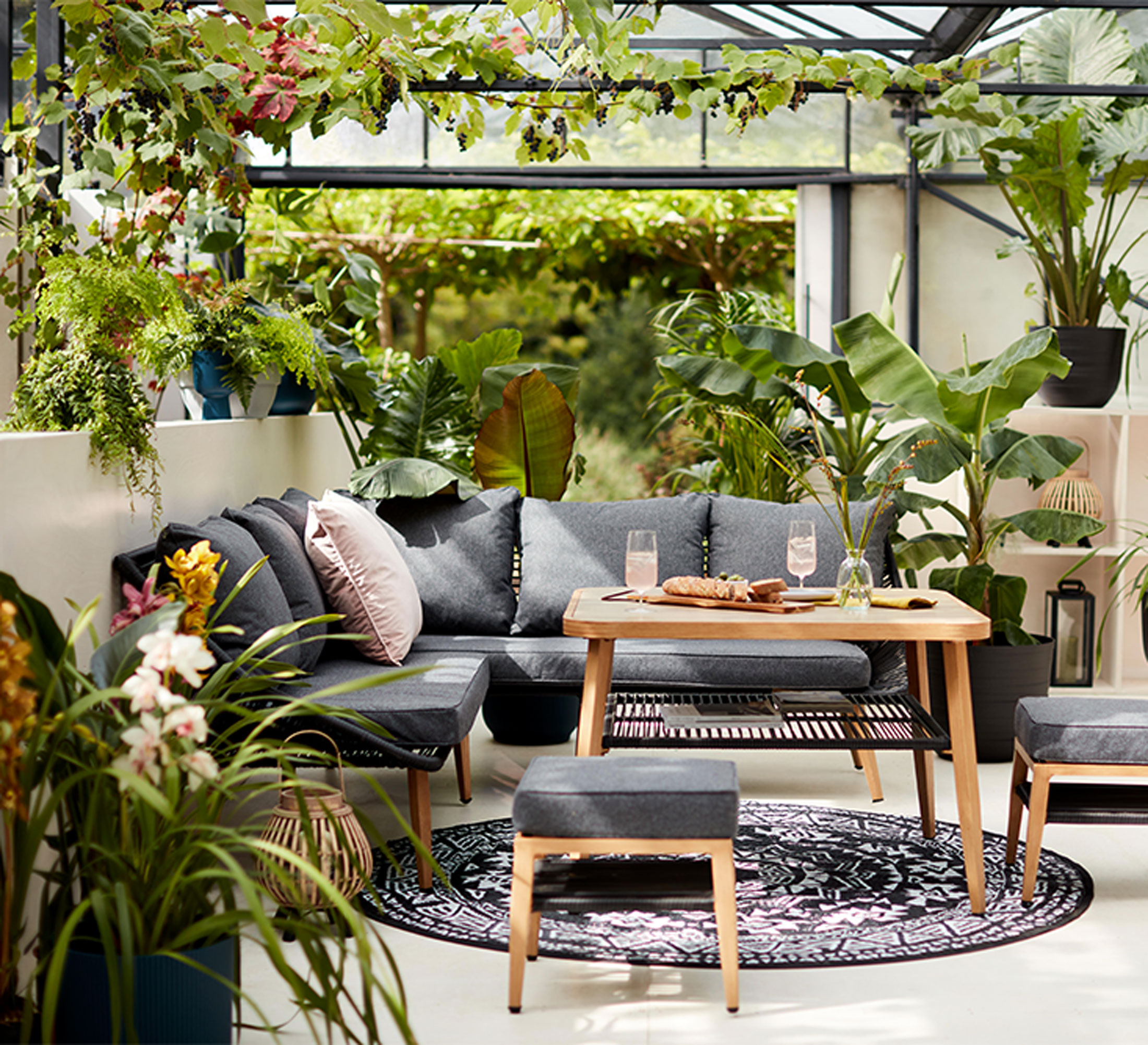
The type of glass that you use is also important. ‘Glare is not usually a significant issue when selecting vertical glazing but the overhead sun on cloudless summer days can make it a major consideration when it comes to glass roofs,’ Mervyn continues.
To deal with glare, the glass that is used in your conservatory or garden room can be tinted or coated before it is installed. These glass solutions can filter and reflect the sunlight to reduce the possibility of glare, while still allowing natural daylight to get in. And these coatings can also be retrofitted to existing glass.
Additionally, you could consider installing an awning, pergola or even a shade sail outside your conservatory to create shade and block the sunlight.







